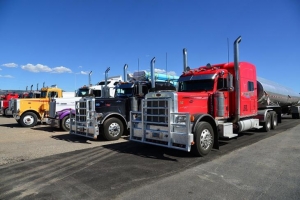
As technology continues to proliferate and integrate with the commercial trucking industry, fleets are increasingly equipped with a wealth of automated devices and software innovations to optimize safety, efficiency, productivity, and profitability.
While these devices and innovations are critical components of any competitive fleet operation, it is individual drivers and those who directly manage them whose hands are still very much on the wheel in utilizing this technology to competitive advantage.
In other words, while trucking technology is indispensable, drivers who are well trained in understanding and effectively interfacing with the technology are the key to getting the most mileage out of it.
The AAA Foundation for Traffic Safety reports that equipping large trucks with advanced safety technologies (ASTs) has the potential to prevent up to 63,000 truck-related crashes each year. Prominent ASTs include automatic emergency braking, adaptive cruise control, forward collision warning, lane departure warning systems, electronic stability control, roll stability control, “blind spot” warning systems, and speed limiters.
While ASTs mitigate safety concerns, the responsibility lies primarily with the driver for ensuring these systems do not deploy in the first place. For example, well-trained drivers actively avoid behaviors that result in the kind of dangers that ASTs issue warnings about and compensate for (like following too closely at inappropriate speeds such that emergency braking systems are automatically deployed).
Well-trained drivers are not only safer drivers, but more productive and profitable drivers when it comes to variables like maximizing fuel economy and avoiding violations.
It’s long been known that drivers can impact fuel efficiency of a tractor-trailer by more than 20 percent. According to the U.S. government’s Fuel Economy project and the American Trucking Associations, the effect of driver behavior on fuel economy can reach up to 33 percent.
Training drivers on technology and best practices for decreasing violations is also critical. As trucking-related violations increase, so does the cost of a fleet’s insurance policy.
But once again, even with the most advanced technology, the responsibility for avoiding violations is in the hands of a well-trained driver. As reported by HNI Risk Advisors, the vast majority of violations that attract enforcement personnel cannot be avoided with even the most advanced technology. Rather, violations are, more often than not, the result of inadequate driver training. The most common violations include:
- Following too closely
- Speeding
- Lane deviation
- Inattentiveness
- Use of a handheld phone
Not just well-trained, but well-incentivized drivers are the winning formula for a fleet’s overall safety, efficiency, productivity, and profitability, and this is where scorecards come in.
Trucking technology — combined with well-trained and well-incentivized drivers — offers a wealth of cost-saving, operation-enhancing competitive advantages. Contact us to see the difference our innovations can make for your drivers’ performance and your fleet’s bottom line.